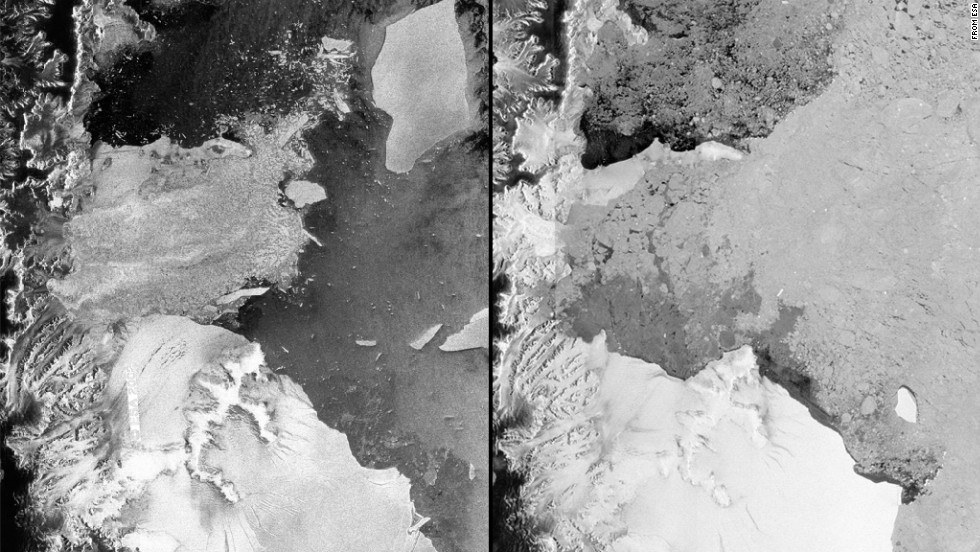One of the last remaining sections of Antarctica's Larsen B Ice Shelf is dramatically weakening, according to anew NASA study.
The study predicts that what remains of the once-prominent ice shelf, a thick floating platform of ice, most likely will "disintegrate completely" before the end of this decade
Ice shelves are extensions of glaciers and function as barriers. Their disappearance means glaciers potentially will diminish more quickly, as well, increasing the pace at which global sea levels rise.

European Space Agency satellite images from 2002, left, and 2012 reveal the disintegration of the Antarctic ice shelf.
A team led by Ala Khazendar of NASA's Jet Propulsion Laboratory in Pasadena, California, found evidence of the ice shelf flowing faster and becoming more fragmented. The flow is creating large cracks in the ice shelf.
"These are warning signs that the remnant is disintegrating," Khazendar said in a NASA press release. "Although it's fascinating scientifically to have a front-row seat to watch the ice shelf becoming unstable and breaking up, it's bad news for our planet."
The Larsen B Ice Shelf has existed for at least 10,000 years.
The ice shelf's disintegrating state came into light after it partially collapsed in 2002. Scientists watched in amazement as the ice shelf splintered and vanished rapidly in six weeks. No one had ever witnessed a large ice mass disappear so quickly, according to Eric Holthaus, a meteorologist at Slate.
The collapse of the Larsen B Ice Shelf seems to have been caused by a series of warm summers on the Antarctic Peninsula, which happen during what in the Northern Hemisphere are winter months. Those trends built up to a particularly warm summer in 2002, according to NASA.
Larsen B measured 4,445 square miles in January 1995. It went down to 2,573 square miles in February 2002 after the major disintegration, and a month later Larsen B was down to 1,337 square miles.
At present the Larsen B remnant is about 618 square miles. That's less than half the size of Rhode Island, the smallest U.S. state. Two decades ago, Larsen B was slightly smaller than the state of Connecticut.
NASA's Jet Propulsion Laboratory glaciologist Eric Rignot, who co-authored the paper, said the research gives insight into how ice shelves closer to the South Pole will react with the warming climate.
"What is really surprising about Larsen B is how quickly the changes are taking place," Khazendar said. "Change has been relentless."
Ice shelves are particularly sensitive to atmospheric warming and changes to ocean temperature, said Helmut Rott from the University of Innsbruck after theEuropean Space Agency observed a rapid retreat of Larsen B Ice Shelf in April 2012 via satellite images.
Other prominent ice shelves in the region also have been affected over the years.
Larsen A disintegrated in January 1995. Larsen C has been somewhat stable with some evidence of thinning and melting, the space agency said after observing satellite imagery in 2012.
0 التعليقات:
إرسال تعليق